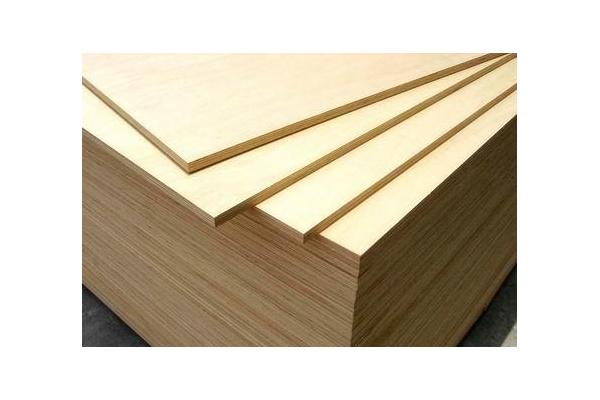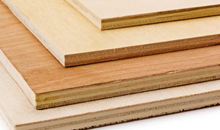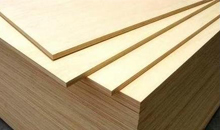Prices for Chinese plywood decline in international markets
Source:globalwood.org
China’s plywood exports totalled 5.52 million cubic metres, valued at US$2,610 million in the first half of 2016, much the same volume as in the first half of 2015 but the average unit price for exported plywood in the first half of 2016 was US$473 per cubic metre, a year on year decline of 6%.

Recent gains in house prices limited to major cities
The National Bureau of Statistics (NBS) has reported July sales prices for newly constructed residential buildings saying, compared to a month earlier, prices declined in 16 cities, increased 51 and were unchanged in 3 cities.
The NBS survey covers 70 medium and large-sized cities but excludes prices for affordable homes built by government. Year on year house prices fell in 11 cities, were up in 58 and unchanged in one.
Prices for second-hand homes have also been reported by the NBS. July prices fell in 12 cities, were up in 51 cities and unchanged in 7 compared to a month earlier and year on year prices were down in 18 cities and up in 52 cities.
Analysts were quick to point out that recent gains were in just a handful of so-called first- and second-tier cities with Shenzhen leading the way but even here the pace of price increase is slowing.
Other cities posting sharp increase in house prices include Xiamen, Hefei Nanjing, Shanghai and Beijing. While prices may be higher than a year ago short term price trends suggest a slowing of demand.
The continual rise in house prices in the first half of this year was largely driven by easy credit with home loans accounting for more than half of all loans by commercial banks. Home loans hit a new peak in June this year.
The overheated housing market has prompted signals from the government that restrictions are likely to be imposed. But with residences in the top tier cities seen as safe investments prices there are immune from regulations or restrictions of credit.
Retail sales rise but not by as much as forecast
Domestic consumption is a major driver of China’s economic growth such that changes in consumer spending can have a marked impact on the economy.
According to the NBS retail sales rose by 10.2% in July 2016 compared to the 10.6% increase in June. The July figure was below the forecast 10.5% rise. Looking more closely at the numbers, sales of building materials were up 15% and furniture sales rose almost 14%.
Prices for Chinese plywood decline in international markets
China’s plywood exports totalled 5.52 million cubic metres, valued at US$2,610 million in the first half of 2016, much the same volume as in the first half of 2015 but the average unit price for exported plywood in the first half of 2016 was US$473 per cubic metre, a year on year decline of 6%.
In the first half of this year the main markets for China‘s plywood were the USA (930,000 cu.m, down 1%), the Philippines (410,000 cu.m, up 40%), UAE (380,000 cu.m, up 6%), the UK (370,000 cu.m, down 12%), Japan (300,000 cu.m, down 12%), South Korea (290,000 cu.m, down 10%), Saudi Arabia (240,000 cu.m, down 17%), Thailand (160,000 cu.m, up 19%), and Algeria (130,000 cu.m, up 104%).
Looking at price trends in the various markets a different story emerges with the average price for plywood exports being US$705 per cubic metre in the US, US$406 per cubic metre in the Philippines, US$376 per cubic metre in UAE, US$443 per cubic metre in the UK, US$448 per cubic metre in Japan, US$361 per cubic metre in South Korea, and US$304 per cubic metre in Saudi Arabia, US$340 per cubic metre in Thailand, US$421 per cubic metre in Israel, and US$330 per cubic metre in Algeria.
Overall prices in these markets fell between 2% and 9%.
US the main market for China’s furniture
The total value of China’s furniture exports in the first half of 2016 fell 4% to US$10.4 billion. Chinese exporters now ship to a multitude of markets but the US was the main market in the first half of this year accounting for 35% of total furniture exports.
Finnish timber association helps wood frame building development
A Finnish timber association is working closely with China’s Wood Protection Industry Association (CWPIA) to develop techiniques for the efficient production of sawnwood for the construction of wooden frame buildings.
The Chinese government has recently prepared a standard for environment-friendly buildings which sees the use of wood rise around 2%. It was recently reported that Japan also is promoting its wood frame technology in China.
Log imports through Caofeidian Port soar
According to the Hebei Inspection and Quarantine Bureau, log imports through Caofeidian Port soared over 600% to 339,400 cubic metres in XXX. The value of log imports was put at USS45.96 million, a year on year increase of more than 400%.
The main supply countries were Canada, the US, New Zealand and Russia and the main species were douglas fir, hemlock, spruce, fir, radiata pine, yellow cedar and cypress.
Analysts say the main reasons for the increase is that Caofeidian Port is the first to have a timber quarantine and sanitary treatment zone for imported timber. Caofeidian Port services importers throughout the northern region including Bejing, Tianjin and Hebei province. The port offers attractive logistics and transport facilities.
New flooring project in Taizhou city
Nature Flooring Holding Co., Ltd in Taizhou City, Jiangsu province is investing RMB1.1 billion in new flooring production capacity. On completion, 6 million square metres of composite flooring will be processed which are expected to generate annual sales of RMB1 billion.
Nature Flooring Holding Co., Ltd is one of Hong Kong, China’s listed companies and has a dedicated Rand D commitment and efficient production and marketing capacity.
(Source: globalwood.org)



 沪公网安备31010402003309号
沪公网安备31010402003309号



